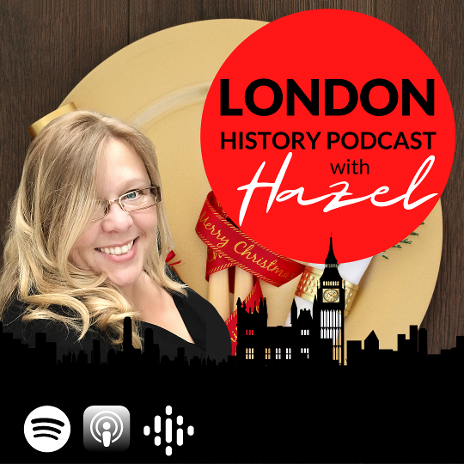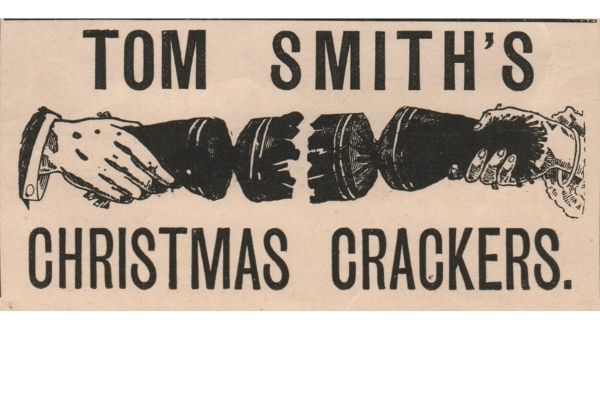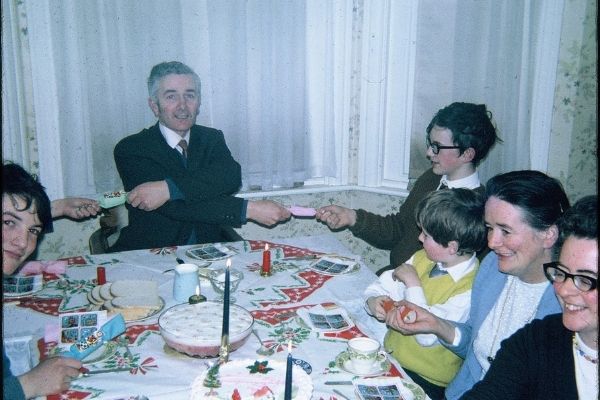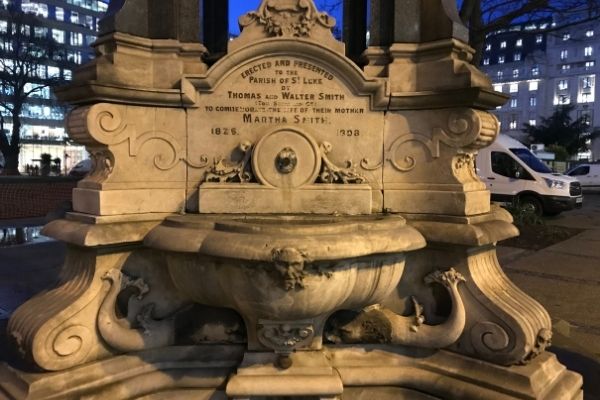
Episode 75: The Christmas Cracker - A Victorian Invention
Join Hazel Baker as she looks at how the tradition of Christmas crackers began and developed to become the traditional event we repeat each year.
Listen Now: Apple Podcasts | Spotify |Android |RSS
Get our latest episode in your inbox here
Other Christmas-themed podcasts:
74. Christmasin 1950s and 1960s London
34. London's Old Shops: Food and Drink
Show notes:
Hazel Baker: Hello and welcome to our London history podcast, where we share our love of London, its people, places and history. This podcast is designed for you to learn things about London that most Londoners don't even know, all in 20 minutes. I am your host Hazel Baker, qualified London tour guide and CEO of www.londonguidedwalks.co.uk
Our walking tours are for those who love London and want to make the most of their time here, no matter whether it's for a weekend or a lifetime. We aim to deliver insightful and well-prepared London guided walks with genuine enthusiasm and professionalism. And in this podcast, we try to do exactly the same.
Get that cup of tea, put your feet up and enjoy!
Christmas crackers are a traditional Christmas favourite in Britain. They have become commonplace at over Christmas dinner and have been around for over 150 years.
What's a Christmas Cracker?
Christmas crackers are festive table decorations that make a ‘bang’ sound when pulled apart and most contain a small gift of some sort, a paper hat and a joke (there's no guarantee the joke is funny).
There are a couple of versions of the Christmas cracker tradition that I know of. The one I grew up with is that the person who ends up with the larger portion of the cracker once pulled apart wins the contents. What I have also experienced more recently is that each person keeps the contents of the cracker, regardless of who ends up with the larger bit.
Did you know that the world's longest Christmas cracker measured 63.1m (207ft) long and 4m (13ft) in diameter and was made by the parents of children at Ley Hill School and Pre-School, Chesham, Buckinghamshire in 2001? Size, apparently, isn't everything, the biggest Christmas cracker pull was at an event organised by Honda in Tochigi, Japan in 2009 which involved an impressive 1,478 people.
When thinking about the Christmas traditions we have here in the UK, you may not connect London with the tradition of Christmas crackers. Well, let me introduce you to Tom Smith, a baker and confectioner who is credited with inventing the Christmas cracker.
Tom Smith was born in Newington, South London, in 1823. At the age of seven, Tom was working as an apprentice to a baker and confectioner. Upon completing his apprenticeship and becoming a master he opened his first shop in Goswell Road, Clerkenwell where he made and sold wedding cakes and confectionery.
It was on a trip to Paris where he first came across bon bons (almonds wrapped in a twist of pretty tissue paper). He came back to London and made and sold his own version which became popular, particularly around Christmas time. To encourage year round sales Smith would include little motto or riddle within the wrapping.
In 1847 he developed his design to incorporate a snapping / crackling sound. Supposedly inspired from the crackle from logs in the fireplace (Tom Smith video). The challenge was to find a chemical that would make the bang but would not be too dangerous and suitable for all members of the family to use. After experimenting with different chemicals, some of which caused fires to break out, he discovered the right one - sodium nitrate. The old name for this was salt-petre. It's been called the mother of Gunpowder. Only very small amounts of this explosive were used! Tom Smith stick the sodium nitrate mixture to two thin strips of card. The ends of the strips were stuck together with the sodium nitrate in between. When the strips of card were pulled apart, the friction caused the sodium nitrate to explode making a crack and a spark. That is still the way it is done today. Inside the Christmas cracker is the narrow card strip with a tiny amount of explosive in the middle. When two people pull the cracker, the glued card strips are pulled apart. The friction of this action makes the sodium nitrate explode. However, when reading around the subject I did read that Tom had bought the explosive recipe from a local fireworks company, Brock’s Fireworks, founded in 1698 and still in business today. The story of him sitting by the fire, even though plausible for inspiration, could quite easily have been a creation from the marketing department. Oh, It was also in 1847 when he patented the cracker.
The success of the cracker enabled the company to move to larger premises at 65, 67 & 69 Wilson Street, Finsbury Square, London.
Tom Smith launched his new range of what he called 'Bangs of Expectation'!
Legend says that, one night, while he was sitting in front of his log fire, he became very interested by the sparks and cracks coming from the fire. Suddenly, he thought what a fun idea it would be, if his sweets and toys could be opened with a crack when their fancy wrappers were pulled in half.
I have read that Christmas crackers were nicknamed 'cosaques' and were thought to be named after the 'Cossack' supposedly from the cracking sound the Russian Cossack horsemen made.


What made Tom Smith and his Christmas crackers so popular?
The widespread industrialisation of the country had helped to form a new middle class. They had more disposable income than ever before. More people were buying more things and Christmas was the perfect excuse for an extra flutter. Britain saw the increase in production of mass-produced toys, decorations, Christmas cards and novelty items such as, yes indeed, the Christmas cracker.
Exciting large displays, such as horse drawn carriages and sleighs, for the big shops in London drew the crowds. Staying relevant and pleasing their customers was also key. The Tom Smith company built up a large range of 'themed' crackers, including over 100 designs. There was a series for bachelors and one for spinsters, where the gifts included items such as false teeth and wedding rings! (one dreads to think what else they contained). The price of the Millionaire's Crackers series reflected their name. They contained a solid silver box with a piece of gold and silver jewellery inside. Other gifts included whistles and miniature dolls.
If you're looking for something to flutter on this Christmas then perhaps the Regal cracker from Fortnum and Mason is for you? Presented in an iconic Fortnum's hamper, each of the 6 Regal Crackers contains two redeemable vouchers for Fortnum's hamper selection. Voucher options range from the Wine Cellar Hamper and the Collection Hamper to The Piccadilly Hamper and the Fortmason Hamper. A pack of 6 will set you back £5,000
Later on the company produced crackers for Suffragettes, a series featuring war heroes and one even for Charlie Chaplin fans! Crackers were not only made for Christmas, oh no, they were also made for special occasions like Coronations.
When Tom Smith died in 1869, his expanding cracker business was taken over by his three sons, Tom, Walter and Henry. Walter introduced the hats into crackers and he also traveled around the world looking for new ideas for gifts to put in the crackers. The links between the Smith family and the company came to an end after the retirement of the three sons.
The Islington Gazette wrote "Nothing is so calculated to excite the risibilities of every guest at the festive board, from the infant to the patriarch, as the Christmas cracker. Tom Smith is a splendid combination of artist and humorist. Each glittering envelope, with its hidden treasure, raises expectations which are rarely misplaced when the mystery is revealed. Success has been achieved because the purveyor of Christmastide merriment has discovered the art of being funny without being vulgar. The bare enumeration of the novelties of the great Finsbury House, with many of which the public have long been familiar, would fill a pamphlet."
A reporter from the Globe 1894 thought that Tom Smith's continual development of the invention played a role in the success of Tom Smith: "It would seem difficult to introduce any striking novelty into the manufacture of the Christmas cracker, but Tom Smith year by year contrives something fresh. This year the novelty is of a very distinct character, and likely to appeal irresistibly to the manufacturer's large clientele. It is a "repeating' cracker. Instead of one explosion, it on being properly pulled gives a succession of half a dozen explosions, "on the principle of the Gatling gun." A Gatling gun was the first hand-driven machine gun). What other versions of Christmas crackers did Tom Smith offer? There were series containing musical instruments, "toys, jewellery, "luggage" (whatever that was) and other things, which in many cases will be found to amuse children, and interest their elders as well."

The writing team at Tom Smith took their job seriously:
"into stereotyped grooves but by some means or other to impart freshness and novelty to their production. Upon the literary style of the crackers accompanying the crackers, Messrs. Smith are particularly to be praised.
Some ladies now make pretty songs,
And some make pretty nurses;
Some men are great at righting wrongs,
And some at writing verses….Messrs. Tom Smith are, however, careful to avoid the doggerel which seems to satisfy many of their competitors. Among the authors who have worked for them was the late Tom Hood, while Charles H. Ross, Ernest Warren, Howard Paul, and other accomplished versifiers are among their present contributors. In their effort to raise the general standard of the Christmas cracker, Messrs. Tom Smith deserve the support of all who agree with the wholesome theory that whatever is worth doing is worth doing in the best possible way, and colonial buyers when making out their indents will do well to remember that the best crackers are to be obtained from the works in Wilson Street, Finsbury.
Tom Smith took their marketing seriously. Not only did they produce exquisite product brochures they created the ultimate advertising jingle (1890's):
Tom Smith is the King of Crackers,
He stands alone and needs no bakers.
By 1900, Tom Smith were selling more than 13 million crackers a year. Today the Tom Smith Group is a part of Napier Industries Ltd, based in Rickmansworth, and is still the largest manufacturer of Christmas crackers in the world.Even to this day, the Royal Family still has special crackers made by Tom Smith, oh and their wrapping paper.

"Christmas Crackers" by Niall McAuley is licensed under CC BY-NC-SA 2.0

When did the sweet get replaced by an often disappointing gift? What was wrong with having a sweet inside? Anyone? My guess is that we have Walter Smith to thank for this. Walter was one of Tom Smith's three sons. Water took over the running of the company after his father's death and developed the Christmas cracker into the version we are familiar with today. It was Walter who began to include the gifts and paper hats that then differentiated the Tom Smith cracker from that of their competitors.
What's with the paper hats in Christmas Crackers?
The tradition of wearing festive headgear is believed to date back to Roman times and their Saturnalia celebrations, which also involved decorative headdresses. If that's too far back to go, then perhaps they are supposed to be paper crowns (they do have pointy bits). During the Twelfth Night celebrations a King or Queen was appointed to look over the proceedings - could the paper crowns come from this tradition? Or are the crowns representative of the Three Wisemen?


When whizzing through the streets of Moorgate in between Corporate Christmas Tours
I was reminded of a Christmas-related story to an often overlooked Victorian drinking fountain on the South-East corner of Finsbury Square (I have added photos into the show notes).
Having previously said it's often overlooked, it most probably because it's not in the most prominent position. Its original position was on the south west corner of Finsbury Square. Don't believe me? Then check out the heartwarming film The Salvage Gang filmed in 1958 where a group of children who have broken a saw whilst building a rabbit hutch wander round the streets of Islington doing odd jobs to earn money for a replacement. The children Pat, Ali, Freddie and Kim carry a metal framed bed over Tower Bridge, up through the City of London before taking a well-deserved drink from said fountain
On the water fountain are the following words: Erected and presented to the Parish of St Luke by Thomas and Walter Smith (Tom Smith and Co) to commemorate the life of their mother, Martha Smith, 1826 - 1898.
Christmas Cracker Jokes
What types of jokes are contained within Christmas crackers nowadays? I'm glad you asked….
What do you call Santa's little helpers?
Subordinate clauses!
What type of Shoes does Santa wear when he travels on a train?
Platforms!
Who hides in the bakery at Christmas?
A mince spy!
Unusual Christmas Crackers
Fortnum & Mason have the purrrrrfect Christmas cracker for your cat including a paper crown and felt toy. If you do treat your feline friend please tag me (@guided_walks) on twitter as I'd love to see your cat's reaction! https://www.fortnumandmason.com/the-cat-christmas-cracker
See all our Christmas Events including our Christmas Lights Walk, A Victorian Christmas and A Christmas Carol walking tour where you can meet Mr Scrooge.
Other Episodes
074 Christmas in 1950s & 1960s London
073 Great Ormond Street Hospital
072 Drs William and John Hunter
069 Victorian Actor William Terriss
067 London Street Names: Food Edition
064 Medieval Toilets in London
062 James Scott, the First Duke of Monmouth
061 Medieval London at the Museum of London
060 Virginia Woolf & The Bloomsbury Set
058 Greenwich Palace and Hospital
057 The Gerald Coke Handel Collection
053 Benjamin Franklin in London
051 Walk Through London's Forgotten Places
047 Victorian Dinosaurs in Crystal Palace Park
046 Beer, The Bard & Historic Buildings of Bankside
045 Drawing London's Buildings
042 John Julius Angerstein: The Man Behind the National Gallery
041 London's Medieval Friaries
040 Charles Dickens in Greenwich
038 The Black Death: London's First Plague
037 Bridgerton & Regency London
034 London's Old Shops - Food & Drink
031 Abandoned London Underground Stations
030 Quirky Street Names - Little Britain
029 The Harp maker of Fitzrovia
024 The Walbrook in Roman London
021 London Area Names - Animal Edition
020 The Great Fire of London - How It Began
017 The Proms & The Royal Albert Hall
016 Women in 1920s London (From Cowgirl to Congress)
014 Postcards From London's Past
013 London Statues: Medical Women
012 The Old Operating Theatre Museum
011 London's Coffeehouses and Commerce
009 Music Halls and Cabaret - from yesterday to today
008 The Monument to the Great Fire of London
006 Hockley in the Hole Clerkenwell
Some links contain affiliate links, which means that if you click on one of the product links, we receive a small commission. This helps support our free podcast. Thank you for the support!
Copyright London Guided Walks and Treasure Hunts

